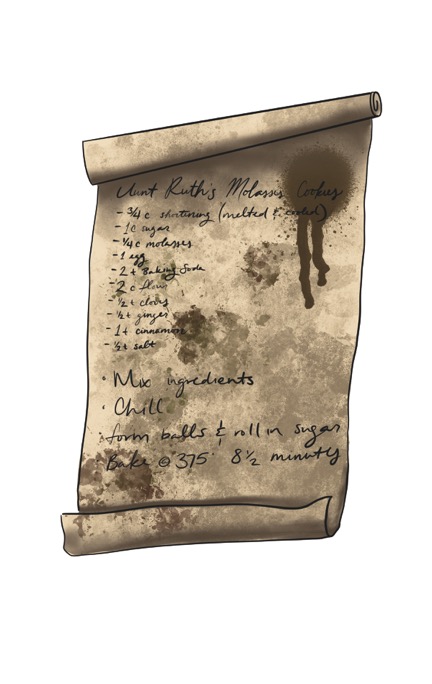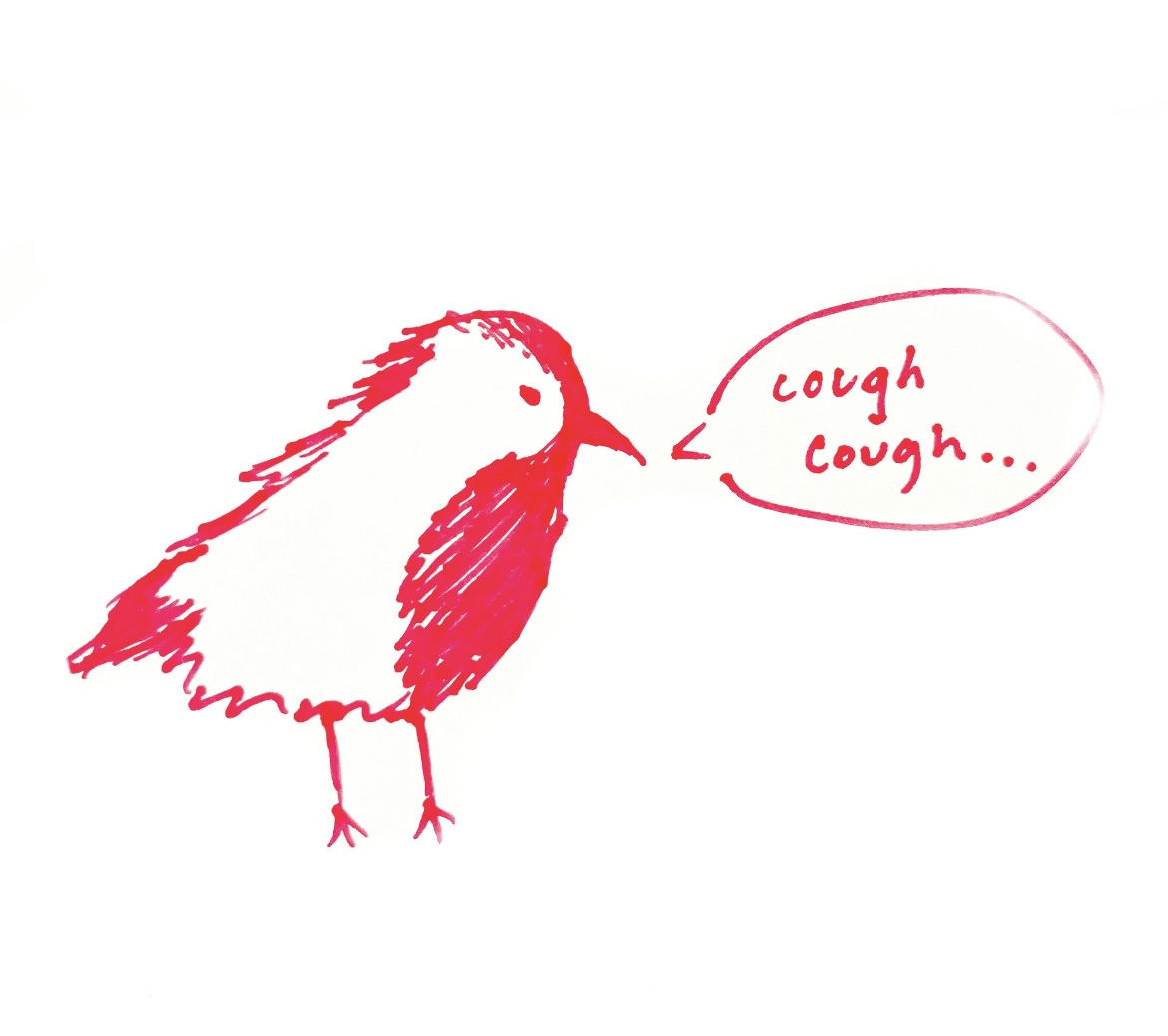I have always enjoyed cooking and baking, well before I knew how to do it properly. A personal favorite, that I then forced my poor parents to eat, was “cabbage soup,” a salt-less and mushy concoction of overcooked purple cabbage and vegetable broth. As I grew up, I used the kitchen as a way to relieve stress, measuring out ingredients and watching the reactions occur as I mixed them together. As most children do, the first recipes I explored were the ones in my cabinets – most notably, a big white binder overflowing with family recipes and clipped ideas from magazines throughout the years.
Family recipes tie us to home and family, even when we live far away. A lot of my family recipes are centered around traditions, like coffee cake for Christmas, or my grandmother making molasses cookies every time she visits us (or we visit her). Food still ties my family together, despite most of us being in different places.
Now, I keep my family recipes in my own, much smaller, binder in my room at school. I have created a home at Whitman without my family, like my parents did when they moved from Wisconsin to California. But I remain fundamentally connected to them through cooking these recipes here, and sharing them with the people around me that make this new place feel like home. I was delighted to make coffee cake this winter, and even more so when it was devoured within a day by my housemates and friends.
Cake Ingredients
3/4 cup butter
3/4 cup sugar
One teaspoon vanilla
Three eggs
Two cup flour, sifted
One teaspoon baking powder
One teaspoon baking soda
1/2 pint sour cream
Topping Ingredients
Four tablespoons butter
One cup brown sugar
Two teaspoons cinnamon
One cup chopped nuts
Steps:
Preheat oven to 350.
Cream butter, sugar and vanilla thoroughly. Add eggs, singly, beat well after each.
Add sifted dry ingredients to creamed mixture alternately with sour cream.
Blend after each addition. Spread 1/2 batter in 10” tube pan, greased and lined with waxed paper.
Make topping:
Cream butter, brown sugar and cinnamon; add nuts and mix.
Dob topping batter in pan with 1/2 of mixture. Cover with remaining cake batter and topping mixture.
Bake for 50 mins. Cool for 10 mins before removing from pan.
Watch temp so as not to overcook. Cake will dry out.
I felt as though I was sharing a piece of my home and family by baking this recipe. I even bought a bundt pan so it would feel more like the ones my parents and I made growing up. While cooking and baking can often be a solo activity, the best meals in my life have always been shared with other people.
At my family’s get-togethers, we always have at least a few dishes that appear at nearly every event. My mom’s kale and almond salad, for instance, always makes an appearance, and we nearly always finish every last bite. We have holidays centered around certain food-related gifts, such as a honeycomb-type chocolate that my grandmother sends to us every year for Easter. Food evokes memory, and our family recipes become associated with traditions and home.
3/4 c shortening, melted and cooled
One cup sugar
One egg
1/4 cup molasses
Two teaspoons baking soda
Two cups flour
1/2 teaspoon cloves
1/2 teaspoon ginger
One teaspoon cinnamon
1/2 teaspoon salt
Mix. Chill dough. Form into balls. Roll in sugar. Bake at 375 for eight and a half minutes.
Maybe your family cookbook is just a collection of memorized recipes, or a handwritten cookbook. Or maybe your family doesn’t have many recipes that have been passed down, but you have made the same easy dinner throughout college, and now just the taste reminds you of the past. Food as memory takes many forms, not just family recipes, but they have been quite important to the way I have learned how to cook, and therefore what I eat now.





